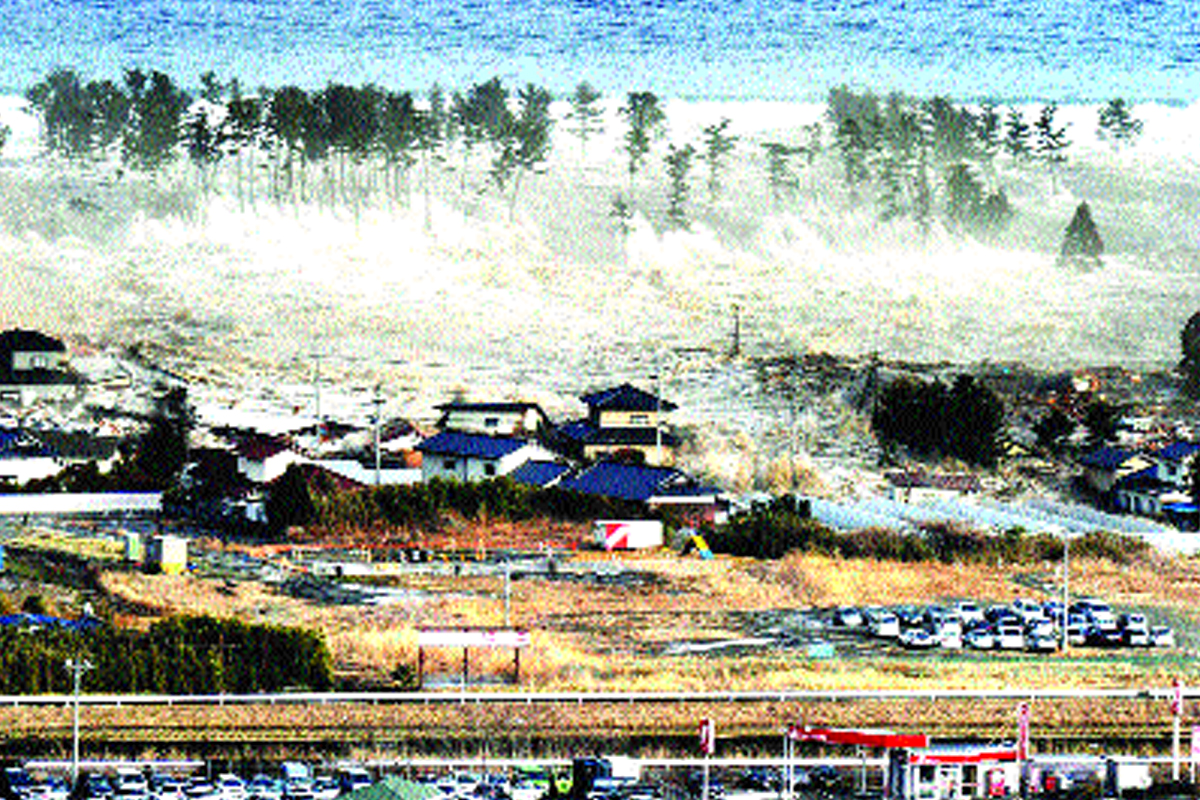Vijay Raman: The Promethean cop with humanitarian ideals
The book Did I really do all this? explores this eternal question of existence through the memoirs and personal experiences of Vijay Raman.
India is one of the affected countries which faced a Tsunami for the first time, even the word Tsunami was also unknown.

Tsunami Catastrophe, Book review
Indian Ocean Tsunami, December 2004 was one of the most devastating disasters that happened in the Indian Ocean. Many countries were not prepared to respond to such huge-scale disasters.
India is one of the affected countries which faced a Tsunami for the first time, even the word Tsunami was also unknown. Indian and global discourses on disaster management changed substantially after this event.
Advertisement
The new institutional systems, legislation, policy, and programs were created in the aftermath of the Tsunami. India could develop one of the best Tsunami warning systems in the world which also helps many countries in the region in sharing data and warnings related to tsunamis.
Advertisement
Prof. Santosh Kumar of the National Institute of Disaster Management, Delhi reviews the book Tsunami Catastrophe and adds his perspective on the subject as well. The book entitled Tsunami Catastrophe explains the Tsunami events and their impacts on Indian coasts.
Author Dr. Dipankar Guha explains the series of incidents from a historical and contemporary perspective. The presence of scholarly apparatus and visual materials used in the book including the maps, diagrams, and photographs make the book interesting.
The objective of the book is to determine the Geo-hydro-graphic impact and issues related to tsunamis on the Indian coasts and to suggest measures to mitigate the impact of tsunamis and similar natural disasters.
This book includes ten chapters that explain the Tsunami and its Geo-hydro-graphic impacts on Indian coasts, mitigation, observational studies, etc. He stresses the importance of early warning systems in disaster management and how tsunamis should be taken as a lesson in learning about mitigating disasters.
The book tries to identify the risk factors and their repercussions to strengthen the preparedness, response, and rehabilitation efforts. The author argues about the lack of literature in the academics before the Tsunami which has a scope in larger scholarly discourse. Evidence of strong literature would have provided a solid base for this book and a great contribution to the academics.
The introductory chapter gives an overview of the Tsunami and the author explains with the help of historical examples of natural disasters. The author describes the disaster with the help of area-specific data along with maps, tables, and photographs.
The second chapter Tsunami and its Effects on Coastal Morphology explain the scope, objectives, and methodology of this book. The author argues about the lack of studies in the area of studies relating to tsunamis and their impacts and how he was led to write this book. The research gap in the literature was identified by Dr. Guha led him to the formulation of the research problem.
In the third chapter Characteristics of Tsunami, the author has elaborated on the key terms and definitions of Tsunami, its characteristics, its wavelength, etc, and how Tsunami is generated by earthquakes, volcanic eruptions, and asteroids or man-made explosions.
The author has successfully explained where and how frequently are tsunamis generated, and the rise and fall of the process and he also explains in detail the occurrence with the help of diagrams. Readers would get conceptual clarity while reading this chapter
The impact of disasters could be substantially reduced if the warning is given in well in time and also on the other hand people adhere to the instructions given. The chapter on Forecasting, Preparedness, and Warning deals with understanding Tsunami source mechanism and potential terminal run-up and how the Indian Ocean Tsunami warning and mitigation system (IOTWS), and finally how data dissemination from DART works round the clock.
The author has concluded his book with the chapter on Recommendations to mitigate Tsunami Disaster in Indian Waters. He has tried to incorporate the various methods available for Tsunami forecasting and the measures which can be taken by the communities during the disaster.
He also discusses the methods such as numerical modeling, coastal inundation and vulnerability maps, Bathymetry, Geographical Information System (GIS), Navarea warnings and safety of Navigation, etc. He has concluded the book by suggesting investing in a cost-effective communication system and to provide legislative back-up to encourage people to adopt cyclone, Tsunami resistant features in their homes.
Dr. Dipankar Guha in his book emphasizes public awareness and education about disaster management by narrating a story about a Japanese sage saving an entire village from Tsunami by giving an early warning. He also stresses the importance of solid infrastructure in disaster management and how humans should contribute toward ecological sustainability and balance.
The book could be useful for the students who are undertaking a course on disaster management with special reference to tsunamis. Also, it would help in building knowledge to the common persons in a very simplistic manner as it has been supported with pictures and graphs and avoided very technical words.
Advertisement